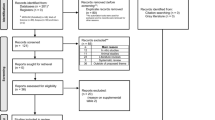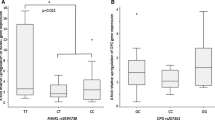Abstract
Aim:
Recent papers have discussed genetic predisposition for root resorption. The aim of this study was to investigate this kind of relationship as dependent on the EARR phenotype. Alleles from IL-1A and IL-1B gene polymorphisms are discussed as genetically predisposing factors.
Material and Methods:
Orthopantomograms (OPG) exhibiting EARR (n = 96) were metrically and statistically analyzed for expression and were compared to a control group (n = 162). Additionally, the percentage of affected teeth per individual was determined. A subgroup of the EARR patient sample (n = 49) was assessed, based on blood analyses, for an association with genomic IL-1A (-889) and IL-1B (+3954) polymorphism.
Results:
In the case of the IL-1A variation, a significant difference of genotype distribution was found between EARR patients and the control group: genotype 2-2 could be seen significantly more frequently in the EARR group. Furthermore, the extent of resorption grades seemed to be influenced by the genetic constitution. The genotype distribution of the IL-1B polymorphism was comparable to the distribution in the control sample. In particular, allele 1 of the IL-1B polymorphism, which has been described as being associated with family histories of EARR, was observed less frequently in the patient cohort than in the control group.
Conclusions:
The available data of the IL-1A polymorphism point to an association of the genotype 2-2 with EARR. As analyses of individual subgroups showed, with the increase in the extent of EARR there was a recognizable correlation with genotype 2-2. The genotype distribution of the IL-1B polymorphism in patients and control cohorts revealed no indication of a predisposition. Despite the low number of cases in the own cohort, the data collected revealed that the allele 1 of the IL-1B polymorphism in patients with sporadic EARR did not contribute to predisposition, in contrast to familial cases. The results are an initial basis for pre-orthodontic genetic EARR risk analyses.
Zusammenfassung
Zielsetzung:
Aktuelle Studien diskutieren die genetische Disposition zu Wurzelresorptionen. Ziel der vorliegenden Studie war es, solche Zusammenhänge in Abhängigkeit des EAWR-Phänotyps darzustellen. Als prädisponierende genetische Faktoren werden Allele von Polymorphismen der Gene IL-1A und IL-1B diskutiert.
Material und Methodik:
Panoramaschichtaufnahmen (PSA) mit EAWR (n = 96) wurden metrisch und statistisch hinsichtlich der Ausprägung erfasst und mit einer Kontrollgruppe (n = 162) verglichen. Zusätzlich wurden die prozentualen Anteile der betroffenen Zähne je Individuum bestimmt. Eine Subgruppe des EAWR-Patientenkollektivs (n = 49) wurde anhand von Blutanalysen im Hinblick auf eine Assoziation mit den genomischen Polymorphismen IL-1A (-889) und IL-1B (+3954) untersucht.
Ergebnisse:
Im Falle der Variante IL-1A zeigte sich ein signifikanter Unterschied in der Genotypverteilung zwischen EAWR-Patienten und Kontrollgruppe: Genotyp 2-2 war signifikant häufiger in der EAWR-Gruppe zu beobachten. Auch schien das Ausmaß des Resorptionsgrades von der genetischen Konstitution beeinflusst zu sein. Die Genotypverteilung des Polymorphismus IL-1B war mit der Verteilung in einer Kontrollpopulation vergleichbar. Insbesondere das Allel 1 des Polymorphismus IL-1B, für das in Familien mit EAWR eine Assoziation berichtet wurde, war in der Patientenkohorte weniger häufig zu beobachten als in der Kontrollgruppe.
Schlussfolgerungen:
Die vorliegenden Daten des IL-1A-Polymorphismus wiesen eine Assoziation des Genotyps 2-2 mit EAWR auf. Wie Analysen der einzelnen Subgruppen zeigten, war mit dem Anstieg des EAWR-Ausmaßes ein Zusammenhang mit Genotyp 2-2 erkennbar. Die Genotypverteilung des IL-1B-Polymorphismus in Patienten- und Kontrollkohorten ergab keinen Hinweis auf eine Prädisposition. Trotz der noch geringen Fallzahl im eigenen Kollektiv ergaben die erhobenen Daten, dass das Allel 1 des IL-1B-Polymorphismus bei sporadischen EAWR-Patienten im Gegensatz zu familiären Fällen nicht zur Prädisposition beitrug. Die Ergebnisse sind eine erste Grundlage für präorthodontische genetische EAWR-Risikoanalysen.
Similar content being viewed by others
References
Alhashimi N, Frithiof L, Brudvik P, Bakhiet M. Orthodontic tooth movement and de novo synthesis of proinflammatory cytokines. Am J Orthod Dentofacial Orthop 2001;119:307–32.
Al-Qawasmi RA, Hartsfield JK Jr, Everett ET. Genetic predisposition to external apical root resorption. Am J Orthod Dentofacial Orthop 2003;123:242–52.
Al-Qawasmi RA, Hartsfield JK Jr, Everett ET. Genetic predisposition to external apical root resorption in orthodontic patients: Linkage of chromosome 18 marker. J Dent Res 2003;82:356–60.
Al-Qawasmi RA, Hartsfield JK Jr, Everett ET. Root resorption associated with orthodontic force in inbred mice: genetic constributions. Eur J Orthod 2006;28:13–9.
Balducci L, Ramachandran A, Hao J. Biological markers for evaluation of root resorption. Arch Oral Biol 2007;52:203–8.
Baumrind S, Korn EL, Boyd RL. Apical root resorption in orthodontically treated adults. Am J Orthod Dentofacial Orthop 1996;110:311–20.
Begue-Kirn C, Ruch JV, Ridall AL, Butler WT. Comparative analysis of mouse DSP and DPP expression in odontoblasts, preameloblasts, and experimentally induced odontoblast-like cells. Eur J Oral Sci 1998;1:254–9.
Brezniak N, Wasserstein A. Root resorption after orthodontic treatment: Part 1. Literature review. Am J Orthod Dentofacial Orthop 1993;103:62–6.
Brezniak N, Wasserstein A. Root resorption after orthodontic treatment: Part 2. Literature review. Am J Orthod Dentofacial Orthop 1993;103:138–46.
Budowle B, Charkraborty R, Giusti AM. Analysis of the VNTR locus D1S80 by PER followed by high-resolution PAGE. Am J Hum Genet 1991;48:137–44.
Evans CA, Srinivasan R, George A. Detection of dentin proteins in human gingival crevicular fluid. In: Davidovitch Z, Mah J, eds. Biological mechanisms of tooth movement and craniofacial adaptation. Harvard Society for the Advancement of Orthodontics 2000;201–5.
Falahat B, Ericson S, Mak D’Amico R, Bjerklin K. Incisor root resorption due to ectopic maxillary canines. Angle Orthod 2008;78:778–85.
Follin M, Ericsson I, Thilander B. Occurrence and distribution of root resorption in orthodontically moved premolars in dog. Angle Orthod 1986;56:164–75.
Fritz U, Diedrich P, Wiechmann D. Apical root resoption after lingual orthodontic therapy. J Orofac Orthop 2003;64:434–42.
George A, Sabsay B, Simonian PA, Veis A. Characterization of a novel dentin matrix acid phosphoprotein. Implications for induction of biomineralization. J Biol Chem 1993;268:12624–30.
George A. Dentin matrix proteins. In: Rabie AM, Urist MR, eds. Bone formation and repair. Amsterdam: Elsevier Science BV 1997:125–32.
Goldie RS, King GJ. Root resorption and tooth movement in orthodontically treated, calcium-deficient, and lactating rats. Am J Orthod 1984;85:424–30.
Göz G, Rahn BA: Parodontale und alveoläre Reaktion bei kippender Zahnbelastung – eine tierexperimentelle Untersuchung. Fortschr Kieferorthop 1985;46:149–62.
Göz G, Rakosi T. Die apikale Wurzelresorption unter kieferorthopädischer Behandlung. Fortschr Kieferorthop 1989;50:196–206.
Grieve WG; Johnson GK, Moore RN, et al. Prostaglandin E (PGE) and interleukin-1 ß (IL-1 ß) levels in gingival crevicular fluid during human orthodontic tooth movement. Am J Orthod Dentofacial Orthop 1994;105:369–74.
Harris EF, Kineret SE, Tolley EA. A heritable component for external apical root resorption in patients treated orthodontically. Am J Orthod Dentofacial Orthop 1997;111: 301–9.
Harry MR, Sims MR. Root resorption in bicuspid intrusion: a scanning electron microscopic study. Angle Orthod 1982;52:235–58.
Kaley J, Phillips C. Factors related to root resorption in edgewise practice. Angle Orthod 1991;61:125–32.
Levander E, Bajka R, Malmgren O. Early radiographic diagnosis of apical root resorption during orthodontic treatment: a study of maxillary incisors. Eur J Orthod 1998;16:223–8.
Levander E, Malmgren O. Evaluation of the risk of root resorption during orthodontic treatment: a study of upper incisors. Eur J Orthod 1988;10:30–8.
Linge BO, Linge L. Apical root resorption in upper anterior teeth. Eur J Orthod 1983;5:173–83.
Linge BO, Linge L. Wurzellängen der oberen Schneidezähne und kieferorthopädische Therapie. Fortschr Kieferorthop 1983;44:392–407.
MacDougall M, Simmons D, Luan X, et al. Dentin phosphoprotein and dentin sialoprotein are cleavage products expressed from a single transcript coded by a gene on human chromosome 4. J Biol Chem 1997;272:835–42.
Massler M, Perreault JG. Root resorption in the permanent teeth of young adults. J Dent Child 1954;21:158–64.
Miller SA, Dykes DD, Polesky HF. A simple salting out procedure for extracting DNA from human nucleated cells. Nucleic Acids Res 1988:16:1208.
Mizuno N, Shiba H, Mouri Y, et al. Characterisation of epithelial cells derived from periodontal ligament by gene expression patterns of bone-related and enamel proteins. Cell Biol Int 2005;29:111–7.
Newman WG. Possible etiologic factors in external root resorption. Am J Orthod 1975;67:522–39.
Ngan DC, Kharbanda OP, Byloff FK, Darendeliler MA. The genetic contribution to orthodontic root resorption: a retrospective twin study. Aust Orthod J 2004;20:1–9.
Nishioka M, loi H, Nakata S, et al. Root resorption and immune system factors in the Japanese. Angle Orthod 2006;76:103–8.
Owman-Moll P, Kurol J, Lundgren D. Repair of orthodontically induced root resorption in adolescents. Angle Orthod 1995;95:403–8.
Oyama K, Motoyoshi M, Hirabayashi M, et al. Effects of root morphology on stress distribution at the root apex Eur J Orthod 2007;29:113–7.
Reitan K. Effects of force magnitude and duration of tooth movement on different alveolar bone types. Angle Orthod 1964;44:244–55.
Ritchie HH, Berry JE, Somerman MJ, et al. Dentin sialoprotein (DSP) transcripts: developmentally-sustained expression in odontoblasts and transient expression in pre-ameloblasts. Eur J Oral Sci 1997;105:405–13.
Takagi Y, Fujisawa R, Sasaki S. Identification of dentin phosphophoryn localization by histochemical stainings. Connect Tissue Res 1986;14:279–92.
Uematsu S, Mogi M, Deguchi T. Interleukin (IL)-1ß, IL-6, tumor necrosis factor-a, epidermal growth factor, and ß2-microglobulin levels are elevated in gingival crevicular fluid during human orthodontic tooth movement. J Dent Res 1996;75:562–7.
Van Loenen M, Dermaut LR, Degrieck J, De Pauw GA. Apical root resorption of upper incisors during the torquing stage of the tipedge technique. Eur J Orthod 2007;29:583–8.
Vardimon AD, Graber TM, Pitaru S. Ursachen und Reparaturvorgänge der externen Wurzelresorption nach Gaumennahterweiterung mitmagnetischen und konventionellen Dehnapparaten. Fortschr Kieferorthop 1991;52:193–203.
Wehrbein H, Fuhrmann RAW, Diedrich PR. Human histological tissue response after long-term orthodontic tooth movement. Am J Orthod Dentofacial Orthop 1995;107:360–371.
Wei S, Kitaura H, Zhou P, et al. IL-1 mediates TNF-induced osteoclastogenesis. J Clin Invest 2005;115:282–90.
Author information
Authors and Affiliations
Corresponding author
Rights and permissions
About this article
Cite this article
Gülden, N., Eggermann, T., Zerres, K. et al. Interleukin-1 Polymorphisms in Relation to External Apical Root Resorption (EARR). J Orofac Orthop 70, 20–38 (2009). https://doi.org/10.1007/s00056-009-8808-6
Received:
Accepted:
Issue Date:
DOI: https://doi.org/10.1007/s00056-009-8808-6




